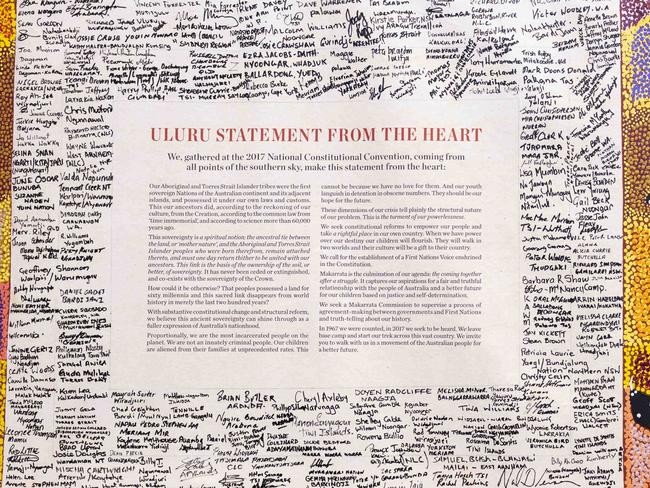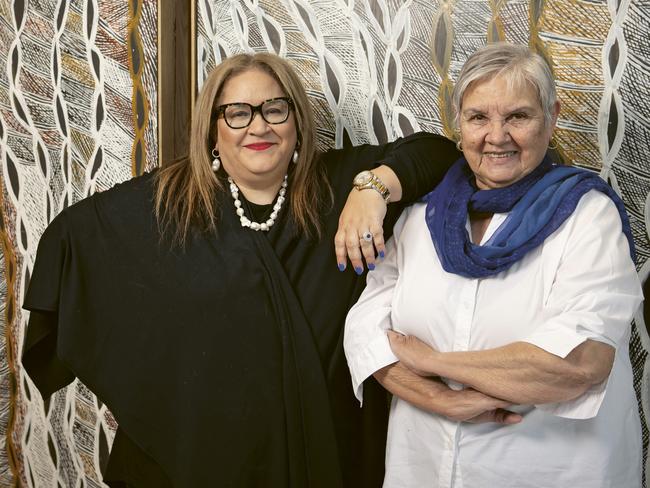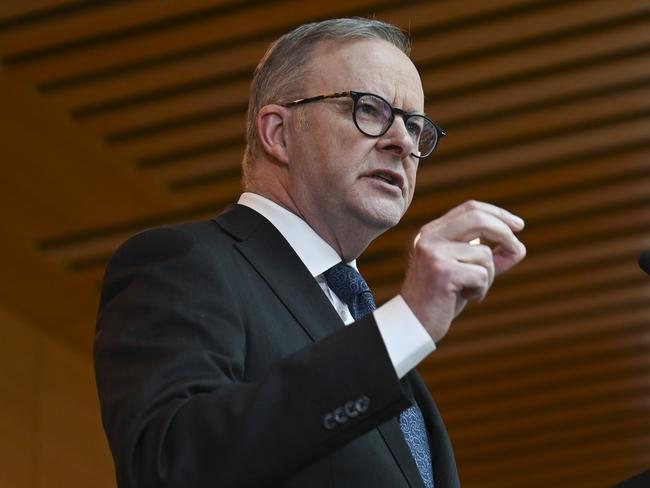Peta Credlin: Yes camp argument wilting in face of full reality of Statement from the Heart
There has been a mad scramble in recent days from the Yes camp to insist that there’s nothing to see in the Uluru Statement than a 439-word statement, but the reality is far different, writes Peta Credlin.
Peta Credlin
Don't miss out on the headlines from Peta Credlin. Followed categories will be added to My News.
When the Prime Minister says he is committed to implementing the Uluru Statement from the Heart IN FULL, what does that actually mean?
Is he referring to the benign one-page version, a poster with a lot of signatures around the edge, made up of just 439 words, or does he want to implement a far more radical document running to dozens of pages that we only know about because of a Freedom of Information request?
If you are not sure, then ask yourself this question: What serious country would seek to insert a new chapter into its constitution based on a one-page poster? None, but the fact that this is what Anthony Albanese wants you to believe rings massive alarm bells for me about what he will really sign Australia up to, if his Voice vote succeeds.
For months and months, the government has refused to give us any detail about the Voice. And when governments refuse to provide detail, and dodge serious questions (as we saw in the parliament last week), then trust me, I’ve worked in Canberra for 16 years, something is up.
READ THE FULL ULURU STATEMENT FROM THE HEART

And the penny dropped for me when I finally got my hands on the complete 26-pages of the Uluru Statement from the Heart, released under official FOI. It is nothing like the “gentle invitation” that the PM claims the Uluru Statement is. Instead, the full 26-page document is an angry manifesto of grievance, separatism, division and compensation. And as soon as I started telling people just what’s in the complete Uluru Statement, Anthony Albanese went a little crazy claiming it was some sort of conspiracy theory.
He is wrong. He doesn’t want you to understand what is in the complete Uluru Statement because if you did, you wouldn’t vote for it. He wants you to think it’s just a poster of goodwill statements not a blueprint to divide this country along racial lines. And he is deliberately trying to play a game of misinformation in the desperate hope you don’t understand what will happen to Australia if you vote Yes in the upcoming referendum.
That’s a big call, but here is the proof.
Anthony Albanese wasn’t at Uluru, he wasn’t even the Labor leader at the time but Professor Megan Davis was there in 2017 and was one of the co-authors of the Uluru Statement. She said the following year in her 2018 Parkes Oration: “The Uluru Statement from the Heart isn’t just the first one page statement. It’s actually a very lengthy document of about 18 to 20 pages and a very powerful part of this document reflects what happened in the dialogues (leading up to it)”.
Giving the Sydney Peace Lecture last year, she said: “It’s very important to read the (Uluru) Statement and the Statement is also much bigger. It’s actually 18 pages”. And also last year, Davis wrote in the Australian that “The Uluru Statement is occasionally mistaken as merely a one page document when … in totality (it’s) closer to 18 pages and includes … a lengthy narrative called Our Story”.

In the last couple of days, Davis has tried to backtrack on six years of statements, now wanting us to believe she got it all wrong and that in fact the PM is right, the Uluru Statement is just a simple one-page poster.
It’s just not believable.
But Davis isn’t alone in trying to change her tune.
Pat Anderson was co-chair of the Referendum Council that auspiced the deliberations culminating in the Uluru Statement. Last Wednesday night on the ABC, trying to get the PM out of a hole of his own making, she told the 730 Report: “Let me explain first of all, the Uluru Statement from the Heart is a one pager. It’s 439 words”. Yet at Melbourne University last year, she’d said that “the Uluru Statement is in fact 18 pages long”. And in 2017 she co-signed the Referendum Council’s final report that, from page 16, highlights a dozen-plus pages of passages that it stated were “extracts from the Uluru Statement from the Heart”.
Seriously, the more they try and cover things up, to pretend that what they have said is no longer true, the more it says to me that we are starting to get to the bottom of the real agenda behind the Voice.

The Voice is not some worthy gesture towards reconciliation; but an attempt to force non-Indigenous Australians to atone for 240 years of settlement by giving Aboriginal leaders a near veto over governmental decisions. Plus, it means multi-billion dollar reparations payments (on top of the near $40 billion currently spent on Indigenous people). Plus the rewriting of our history as a story of shame. It is all there in the full Uluru Statement – “Voice, Treaty, Truth” – and that’s why there’s been such a push in recent days to try and deny any credibility to this document that we only know about because the government was forced to release it under FOI.
As I pointed out on my Sky News program last week, there is one disconcerting discrepancy between the Uluru Statement referenced in the 2017 Referendum Council’s published final report and the version released as “Document 14” under FOI. The FOI version says, on page 19, “a Treaty could include a proper say in decision-making … reparations, a financial settlement (such as seeking a percentage of GDP), (and) the resolution of land, water and resources issues…”.
Yet the originally published version, in Pat Anderson’s Referendum Council’s report, omits financial (as in “financial settlement”) and entirely omits any reference to “seeking a percentage of GDP”. It’s hard to avoid the conclusion that the published Uluru Statement had been sanitised to make it less alarming.
The use of the term Makarrata, even in the sanitised one-page Uluru summary, gives the game away. This is a Yolngu word meaning a retribution ritual, a disabling spearing, to atone for a wrong that’s been committed. Hence the Makarrata Commission, that even the one-page version of the Statement demands, is essentially a payback punishment for the supposed injustice of the settlement of Australia.
Think of the near compulsory acknowledgments of “country” at all official and corporate events even though as Tony Abbott said last week ‘This country belongs to all of us’, the already routine flying of the Aboriginal flag coequally with the national flag, the oppressive insistence on Indigenous cultural sensitivity training in most large workplaces, and now this new tendency to refer to our big cities as Gadigal (Sydney), Naarm (Melbourne), and Meanijin (Brisbane) – even though, places like Canberra and the little town where I grew up, Wycheproof, are Indigenous names already showing we have long lived alongside Indigenous culture even if the activists want now to seed hate.
All this will be turbocharged if the Voice is passed, as part of the re-indigenisation of our country to atone for the original sin of settlement. Hence the mad scramble in recent days from the Yes camp to insist that there’s nothing to see beyond a poster; and that the biggest constitutional change we’ve ever been asked to make is validated on just 439 words. Australians, I hope, are just not that gullible.
WATCH PETA ON CREDLIN ON SKY NEWS, WEEKNIGHTS AT 6PM
More Coverage
Originally published as Peta Credlin: Yes camp argument wilting in face of full reality of Statement from the Heart





